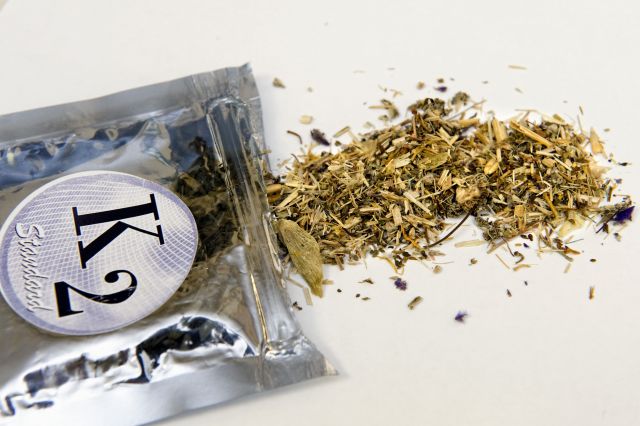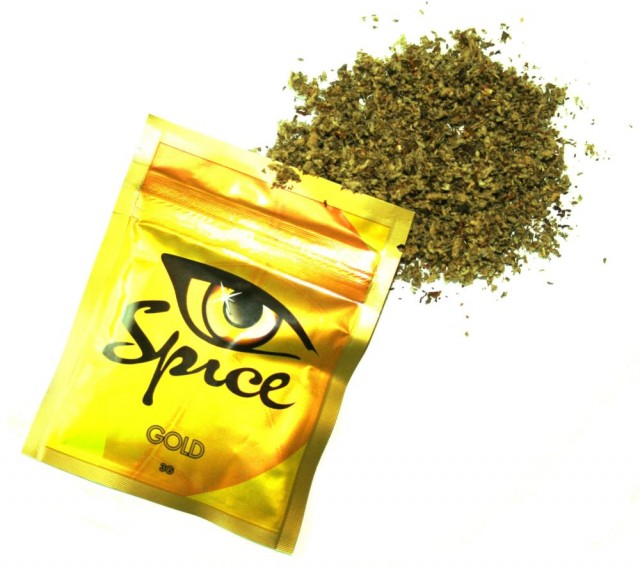 In their ventures, cannabis users may come into contact with a synthetic version of the revered herb: spice, or sometimes referred to as K2. The first time I came into contact with spice was by complete accident. I usually try to be very safe with my drug use, but occasionally, we all slip up.
In their ventures, cannabis users may come into contact with a synthetic version of the revered herb: spice, or sometimes referred to as K2. The first time I came into contact with spice was by complete accident. I usually try to be very safe with my drug use, but occasionally, we all slip up.
Before heading out on a Friday night, a friend stopped by my place to see if I was interested in smoking “a bowl.” What he didn’t reveal until after we had partaken, was that this was a bowl of spice, not my familiar friend cannabis. I had a very intense 15-minute high that had me very panicked and concerned for my health.
I hadn’t heard of spice before, so while riding in the passenger seat of my friend’s car, I looked up the adverse affects of spice, which include: paranoia, hallucinations, seizures, cardiac problems, kidney damage, mental illness and, in rare cases, death. (As a word of friendly anecdotal advice, if you ever find yourself accidentally under the influence of a new drug, it’s probably best to wait until after you’re off of it to look up the negative side effects.)
So what is spice exactly? According to the National Institute on Drug Abuse:
“Spice” refers to a wide variety of herbal mixtures that produce experiences similar to marijuana (cannabis) and that are marketed as “safe,” legal alternatives to that drug. Sold under many names, including K2, fake weed, Yucatan Fire, Skunk, Moon Rocks, and others — and labeled “not for human consumption” — these products contain dried, shredded plant material and chemical additives that are responsible for their psychoactive (mind-altering) effects.”
Spice is legal in the majority of states in the U.S. and marketed as an “incense,” so it avoids going through any federal regulations, which it would if marketed as a medicine or smokable product. Spice product labels often falsely advertise that it is made up of “natural” psychoactive compounds, derived from various plants. However, upon chemical examination, spice is revealed to contain synthetic cannabinoid material.
 In other words, spice is anything but natural and is made up of chemicals designed in a laboratory. One of the synthetic cannabinoids sprayed onto spice herbs is called ‘JWH-018‘, which was invented in a lab to help with pain. The motivation behind experimenting with cannabinoids started in an effort to isolate the pain relieving effects without creating the “high” sensation.
In other words, spice is anything but natural and is made up of chemicals designed in a laboratory. One of the synthetic cannabinoids sprayed onto spice herbs is called ‘JWH-018‘, which was invented in a lab to help with pain. The motivation behind experimenting with cannabinoids started in an effort to isolate the pain relieving effects without creating the “high” sensation.
What is a spice high like? Spice is said to have similar effects to cannabis; relaxation, elevated mood and altered perceptions. While there are no current studies published on the effects of spice on the brain, we do know that spice products bind on the same cell receptors as THC, the main psychoactive component of cannabis. However, some of the compounds in spice bind more strongly than THC, which may lead to more intense experiences. Because the chemicals in different spice products are unknown, the effects of these chemicals may have varied and have unpredictable effects on the brain.
Spice is popular amongst young people and is the second most used illicit drug by high school seniors, coming second only to cannabis itself. But with all the negative side effects of spice, why would anyone opt for the synthetic drug over the real deal? It might have to do with access to cannabis due to its federal prohibition.
Young teens may be turning to spice because it is legal, when they are not able to obtain actual weed. According to this article published last year, the overwhelming majority of cannabis users prefer to smoke natural cannabis over the synthetic stuff, finding it more enjoyable without the adverse effects. After my experience with spice, I can confidently say I will be going organic every time.









